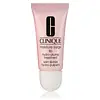What's inside
What's inside
 Key Ingredients
Key Ingredients

 Benefits
Benefits

 Concerns
Concerns

 Ingredients Side-by-side
Ingredients Side-by-side

Petrolatum
EmollientPolybutene
Polyglyceryl-2 Triisostearate
EmulsifyingHydrogenated Polyisobutene
EmollientTocopheryl Acetate
AntioxidantPvp
Emulsion StabilisingSilica
AbrasiveHydrogenated Castor Oil
EmollientPPG-51/Smdi Copolymer
Caprylic/Capric/Myristic/Stearic Triglyceride
EmollientButyrospermum Parkii Butter
Skin ConditioningSea Whip Extract
Skin ConditioningCeramide Ng
Skin ConditioningCholesterol
EmollientAstrocaryum Murumuru Seed Butter
EmollientCaprylic/Capric Triglyceride
MaskingEthylene/Propylene/Styrene Copolymer
C12-16 Alcohols
EmollientTetrahexyldecyl Ascorbate
AntioxidantButylene/Ethylene/Styrene Copolymer
Caprylyl Glycol
EmollientPalmitic Acid
EmollientHydrogenated Lecithin
EmulsifyingPetrolatum, Polybutene, Polyglyceryl-2 Triisostearate, Hydrogenated Polyisobutene, Tocopheryl Acetate, Pvp, Silica, Hydrogenated Castor Oil, PPG-51/Smdi Copolymer, Caprylic/Capric/Myristic/Stearic Triglyceride, Butyrospermum Parkii Butter, Sea Whip Extract, Ceramide Ng, Cholesterol, Astrocaryum Murumuru Seed Butter, Caprylic/Capric Triglyceride, Ethylene/Propylene/Styrene Copolymer, C12-16 Alcohols, Tetrahexyldecyl Ascorbate, Butylene/Ethylene/Styrene Copolymer, Caprylyl Glycol, Palmitic Acid, Hydrogenated Lecithin
Octyldodecanol
EmollientPolyethylene
AbrasiveSqualane
EmollientMicrocrystalline Wax
Emulsion StabilisingPPG-51/Smdi Copolymer
Dextrin Isostearate
Skin ConditioningPolyglyceryl-3 Diisostearate
EmulsifyingHydrogenated Polyisobutene
EmollientTocopheryl Acetate
AntioxidantSodium Hyaluronate
HumectantRicinus Communis Seed Oil
MaskingCymbidium Grandiflorum Flower Extract
Skin ConditioningPhytosteryl/Octyldodecyl Lauroyl Glutamate
Skin ConditioningCaprylic/Capric Triglyceride
MaskingPolyglyceryl-6 Polyricinoleate
EmulsifyingOzokerite
Emulsion StabilisingSilica
AbrasiveDisteardimonium Hectorite
StabilisingIsopropyl Titanium Triisostearate
EmollientButylene/Ethylene/Styrene Copolymer
Ethylene/Propylene/Styrene Copolymer
Dibutyl Lauroyl Glutamide
Skin ConditioningAlumina
AbrasiveIsostearic Acid
CleansingIsostearyl Alcohol
EmollientButyl Stearate
EmollientHydrogenated Castor Oil
EmollientParfum
MaskingBenzyl Benzoate
AntimicrobialBenzyl Salicylate
PerfumingLinalool
PerfumingLimonene
PerfumingBHT
AntioxidantMica
Cosmetic ColorantCI 77891
Cosmetic ColorantCI 77491
Cosmetic ColorantCI 77492
Cosmetic ColorantCI 77499
Cosmetic ColorantCI 77163
Cosmetic ColorantCI 42090
Cosmetic ColorantCI 77400
Cosmetic ColorantCI 15850
Cosmetic ColorantCI 45380
Cosmetic ColorantCI 45410
Cosmetic ColorantCI 73360
Cosmetic ColorantCI 17200
Cosmetic ColorantCI 19140
Cosmetic ColorantCI 15985
Cosmetic ColorantOctyldodecanol, Polyethylene, Squalane, Microcrystalline Wax, PPG-51/Smdi Copolymer, Dextrin Isostearate, Polyglyceryl-3 Diisostearate, Hydrogenated Polyisobutene, Tocopheryl Acetate, Sodium Hyaluronate, Ricinus Communis Seed Oil, Cymbidium Grandiflorum Flower Extract, Phytosteryl/Octyldodecyl Lauroyl Glutamate, Caprylic/Capric Triglyceride, Polyglyceryl-6 Polyricinoleate, Ozokerite, Silica, Disteardimonium Hectorite, Isopropyl Titanium Triisostearate, Butylene/Ethylene/Styrene Copolymer, Ethylene/Propylene/Styrene Copolymer, Dibutyl Lauroyl Glutamide, Alumina, Isostearic Acid, Isostearyl Alcohol, Butyl Stearate, Hydrogenated Castor Oil, Parfum, Benzyl Benzoate, Benzyl Salicylate, Linalool, Limonene, BHT, Mica, CI 77891, CI 77491, CI 77492, CI 77499, CI 77163, CI 42090, CI 77400, CI 15850, CI 45380, CI 45410, CI 73360, CI 17200, CI 19140, CI 15985
 Reviews
Reviews

Ingredients Explained
These ingredients are found in both products.
Ingredients higher up in an ingredient list are typically present in a larger amount.
We don't have a description for Butylene/Ethylene/Styrene Copolymer yet.
This ingredient is an emollient, solvent, and texture enhancer. It is considered a skin-softener by helping the skin prevent moisture loss.
It helps thicken a product's formula and makes it easier to spread by dissolving clumping compounds.
Caprylic Triglyceride is made by combining glycerin with coconut oil, forming a clear liquid.
While there is an assumption Caprylic Triglyceride can clog pores due to it being derived from coconut oil, there is no research supporting this.
Learn more about Caprylic/Capric TriglycerideWe don't have a description for Ethylene/Propylene/Styrene Copolymer yet.
Hydrogenated Castor Oil is created by adding hydrogen to castor oil. This helps stabilize the castor oil and raises the melting point. At room temperature, hydrogenated castor oil is solid.
Castor Oil helps moisturize the skin. It is rich in a fatty acid called ricinoleic acid. This fatty acid helps prevent moisture loss on the skin. This helps keep your skin soft and hydrated. Ricinoleic acid also has anti-inflammatory and pain reducing properties.
As a wax-like substance, Hydrogenated Castor Oil acts as an emollient. Emollients help keep your skin stay soft and smooth by creating a barrier. This barrier helps trap moisture.
Hydrogenated Castor Oil may not be fungal-acne safe. We recommend speaking with a professional.
Learn more about Hydrogenated Castor OilHydrogenated Polyisobutene is a synthetic polymer. Polymers are compounds with high molecular weight. Hydrogenated Polyisobutene is an emollient and texture enhancer.
In one study, Hydrogenated Polyisobutene showed better skin hydration levels than Caprylic/Capric Triglyceride. As an emollient, it helps keep your skin soft and hydrated by trapping moisture in.
Hydrogenated Polyisobutene is often used as a mineral oil replacement.
Learn more about Hydrogenated PolyisobuteneWe don't have a description for PPG-51/Smdi Copolymer yet.
Silica, also known as silicon dioxide, is a naturally occurring mineral. It is used as a fine, spherical, and porous powder in cosmetics.
Though it has exfoliant properties, the function of silica varies depending on the product.
The unique structure of silica enhances the spreadability and adds smoothness, making it a great texture enhancer.
It is also used as an active carrier, emulsifier, and mattifier due to its ability to absorb excess oil.
In some products, tiny microneedles called spicules are made from silica or hydrolyzed sponge. When you rub them in, they lightly polish away dead skin layers and enhance the penetration of active ingredients.
Learn more about SilicaTocopheryl Acetate is AKA Vitamin E. It is an antioxidant and protects your skin from free radicals. Free radicals damage the skin by breaking down collagen.
One study found using Tocopheryl Acetate with Vitamin C decreased the number of sunburned cells.
Tocopheryl Acetate is commonly found in both skincare and dietary supplements.
Learn more about Tocopheryl Acetate